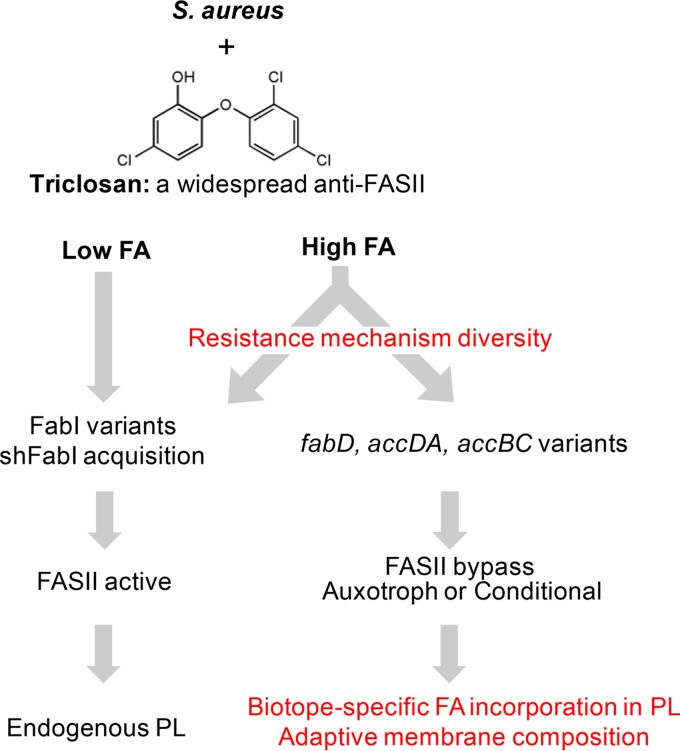FIG 5.
Contribution of fatty acid (FA)-rich environments to diversity of S. aureus anti-FASII resistance. Intensive use of triclosan has led to its accumulation in numerous environments, including FA-rich animal biotopes. High-FA environments may select for diverse resistance mechanisms, including those that require exogenous fatty acids. They comprise triclosan-resistant fabI variants that were identified independently of FA (22, 23, 41–43); our results show that resistance frequencies are even greater in FA-rich environments. FA-rich environments favor emergence of FASII bypass mutants affected in initiation genes fabD and accDA accBC (6, 19, 29); the present work shows that FASII bypass is frequent among clinical isolates and correlates with genetic polymorphisms in fabD and acc. Fatty acid auxotrophs (nonculturable without fatty acids) and normally growing isolates constitute this novel clinical group of resistant staphylococci. Anti-FASII resistance under low-FA conditions leads to endogenous phospholipid (PL) membranes. FASII bypass under high-FA conditions leads to a flexible membrane composition that varies according to what fatty acids are available in each biotope.

